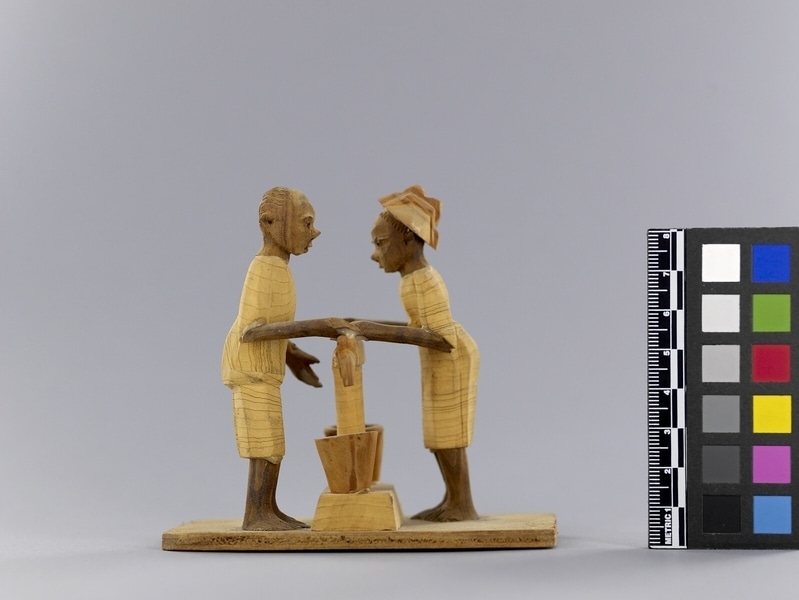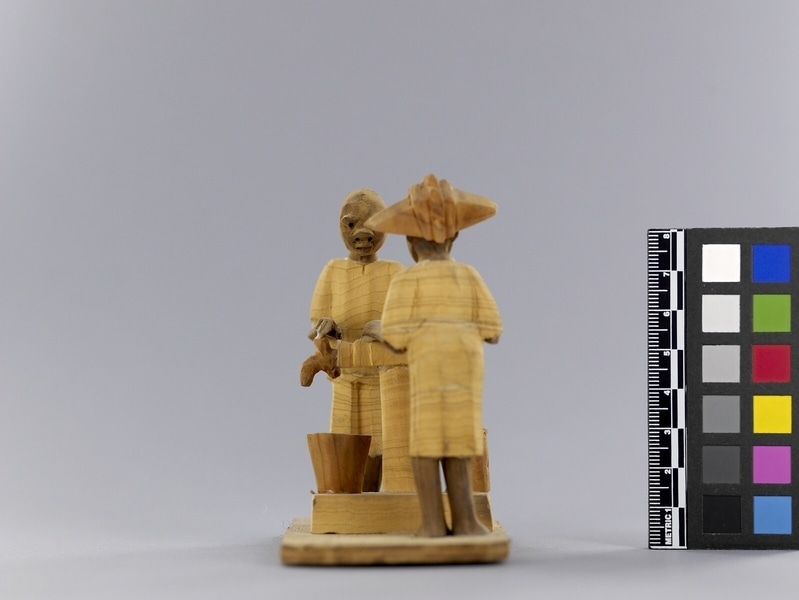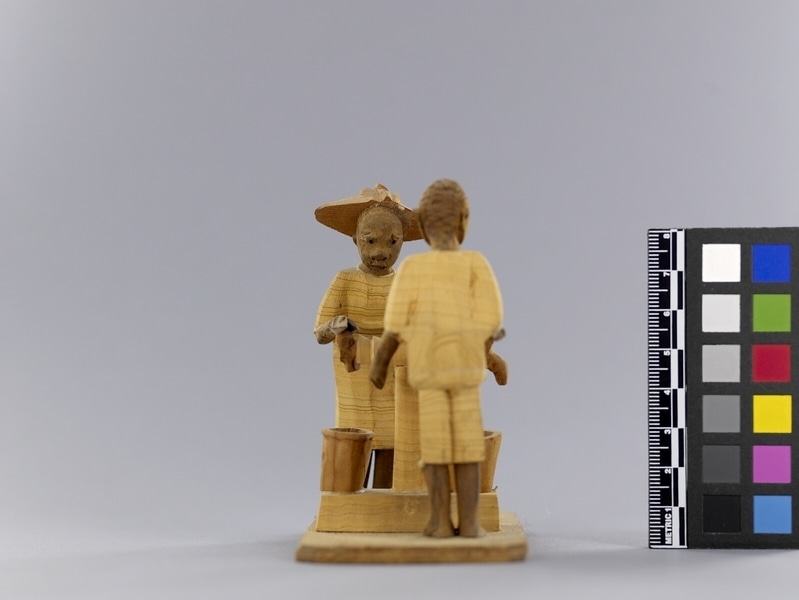Thorn Carving Item Number: Af377 from the MOA: University of British Columbia




Description
Two standing figures representing people facing each other across a pump. One man is bareheaded, wearing a loose short-sleeved shirt and knee-length trousers with his right hand on the pump spout. The second figure is wearing a one piece short-sleeved garment and a wide brimmed hat with the right hand on the pump handle and the left hand on the shaft of the pump. A bucket stands at each end of the base of the pump, one under the spout, and one under the handle. All clothing is light yellow-brown. The heads and limbs are dark brown. Pump handle, spout, and pails are light red-brown. Base is brown wood.
History Of Use
Thorn carvings are miniatures depicting scenes from Nigerian life. This type of carving began circa 1930. Thorns vary in size. They can be as large as 12.7 cm. long and 9.6 cm. wide. They are comparatively soft and easily carved. The light yellow-brown thorn and the dark brown thorn come from the Ata tree; the light red-brown thorn comes from Egun trees. The parts are glued together with viscous paste made from rice cooked with water. They are carved by men.
Narrative
Represents men's activities.
Cultural Context
craft; tourist art
Item History
- Made in Nigeria before 1972
- Collected during 1972
- Owned by Andrew Stewart and Jessie Stewart before February 8, 1980
- Received from Andrew Stewart (Donor) and Jessie Stewart (Donor) on February 8, 1980
What
- Name
- Thorn Carving
- Identification Number
- Af377
- Type of Item
- carving
- Material
- wood, rice adhesive, egun thorn and atum thorn
- Manufacturing Technique
- carved and glued
- Overall
- height 9.8 cm, width 10.0 cm, depth 5.4 cm
Who
- Culture
- Yoruba
- Previous Owner
- Andrew Stewart and Jessie Stewart
- Received from
- Andrew Stewart (Donor) and Jessie Stewart (Donor)
Where
- Holding Institution
- MOA: University of British Columbia
- Made in
- Nigeria
When
- Creation Date
- before 1972
- Collection Date
- during 1972
- Ownership Date
- before February 8, 1980
- Acquisition Date
- on February 8, 1980
Other
- Item Classes
- carvings & sculpture
- Condition
- good
- Accession Number
- 0590/0063